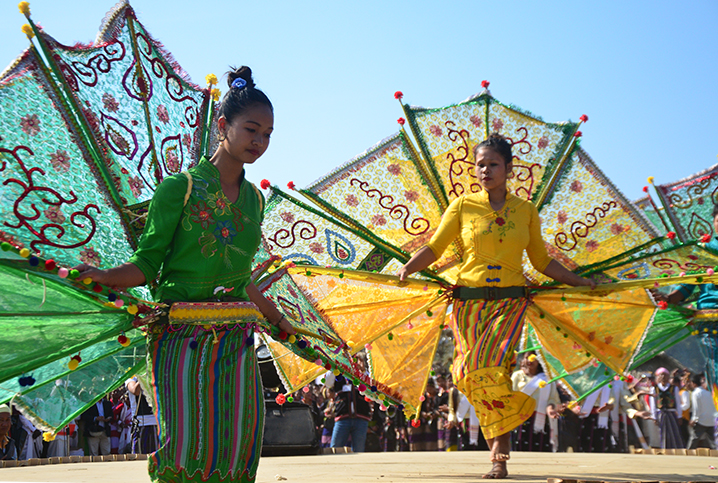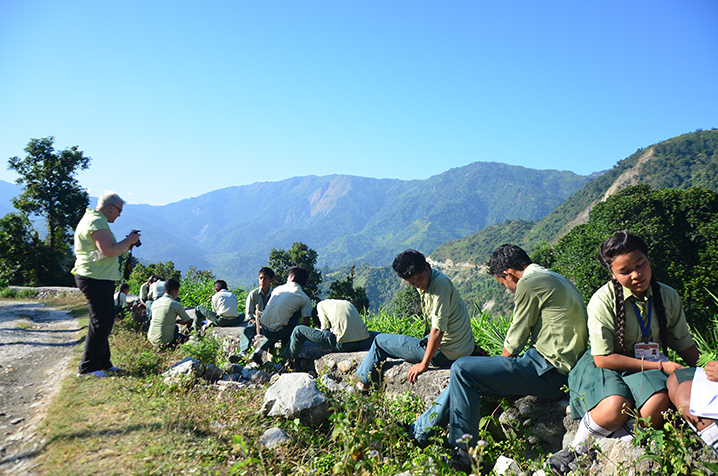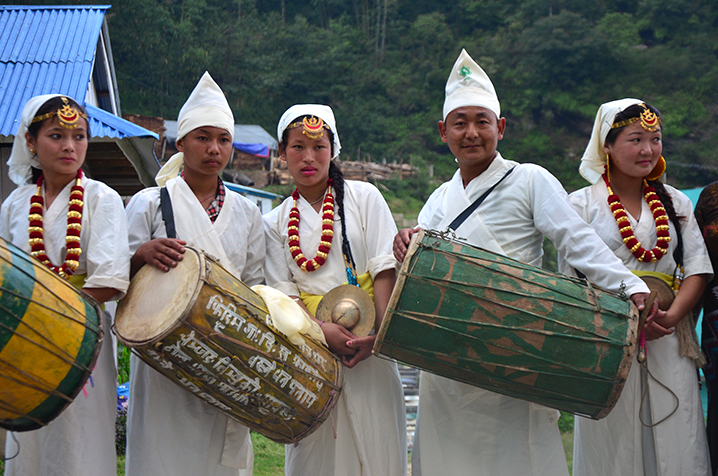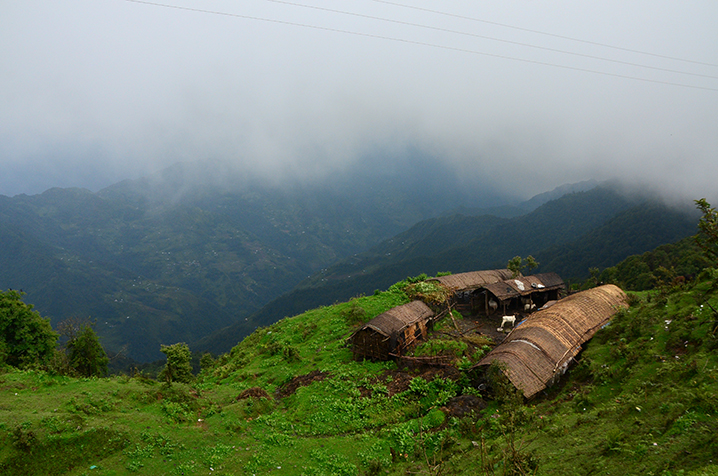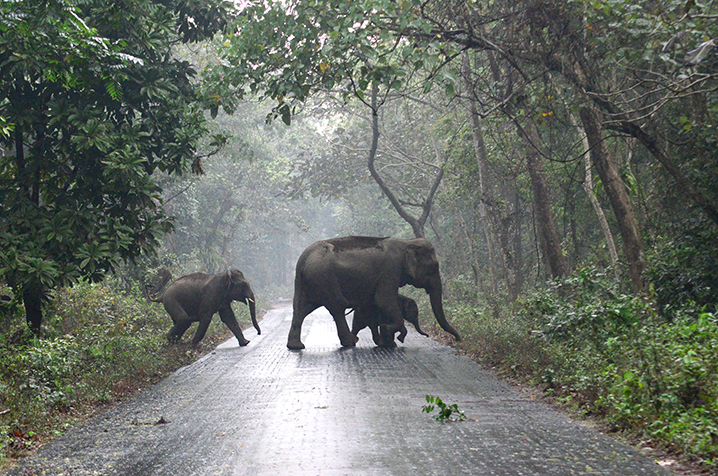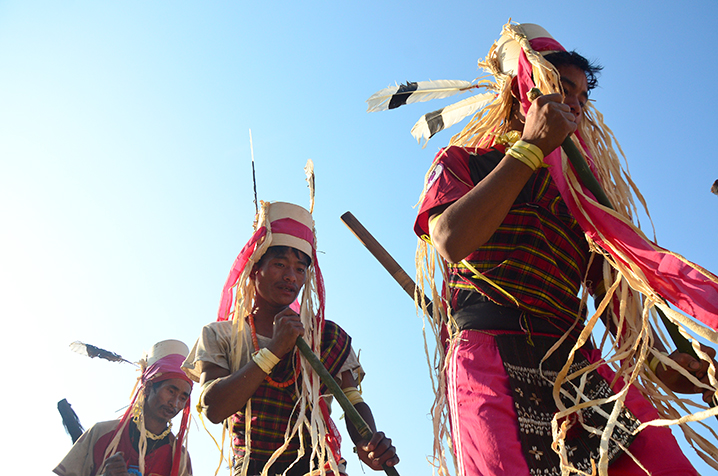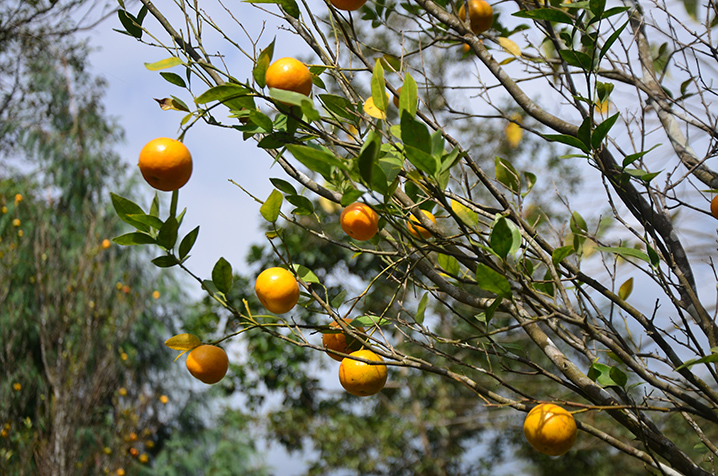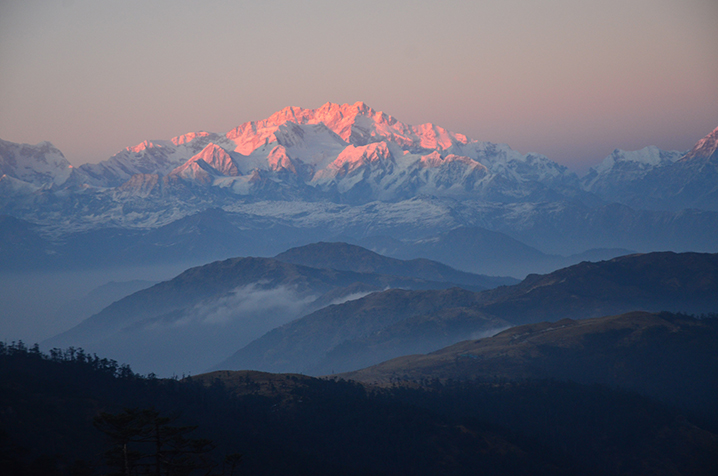Travels with us...
Enter Your Search Text :
"27 Years of weaving tourism consciousness in villages, empowering ecological pride and economical freedom"
... [+]Voluntourism : Eastern Nepal and Cross-Border Circuit
Voluntourism is one of the tool of tourism, which is mainly an initiative when both the tourism institution and tourists agrees to support the community, destination or a village with different social ... [+]Lingsey Kalimpong
Lingsey a remote village of Kalimpong Sub-Divison is situated at an altitude of 4800 ft. and is 24 km from Pedong & 52 km from Kalimpong Coordinates: 27°9\'46"N 88°40\'29"E. It is ... [+]
Sikkim - the last Shangri-La
Sikkim is the mystic land of legends, kings and bravery of knights. It is also the land of flowers and smiles of village children. Mount Khangchendzonga the third highest peak of in the world. Here the air is bathed with the scent of flowers with fleeting butterflies and birds while rivers carry crystal clear waters from snow capped mountains.
Sikkim was an independent country till 1897 ruled by the Chogyal. The royal palace at Gangtok - the capital, and other hamlets bear testimony to the splendours of the past. Tucked away into a niche in the mighty Himalayas Sikkim lies cocooned between Nepal,Tibet and Bhutan.
The city of Gangtok "meaning hill top" is perched high on the hills overlooking the monastery of Rumtek - the second largest Tibetian monastery in the world. Coloured Buddhist prayer flags flap all over this tiny state spreading messages of peace in the winds. Sikkim has endless variations of natural beauty. Flowers, verdant glades, lofty forests are criss-crossed by numerous streams.
Tibetan buddhism is divided into the red and yellow sects. The red sect comprises of the Nyingma, Kargyu and Sakya lineages and the yellow sect consists of the Gelugpa Lineage. The sects and the lineages are differentiated from each other by the rituals performed, monastic discipline and the founder. However the differences tend to blur with rituals of one lineage overlapping the other.
The History
The history of Sikkim began in 16th century AD.in a small hamlet called Yuksom which is in West Sikkim today.Khye Bhumsa,the eldest son of Guru Tashi and descendent of the great monarchs of Tibet, Srontsang Gampo(600 A.D approx) and Thisrondetsan(730 A.D.approx),being childless seeked the blessings of the Lepcha chief Thekong Tek near Gangtok.Later his descendent Phuntsok Namgyal was crowned in 1641 A.D. as the first Chogyal(Religious king)of Sikkim at Yuksom.
Lama Lhatsun Chempo arrived via Dzongri to Norbugong and met here with the two lamas:Sempa Chempo and Righsin Chempo and the place started to be known as Yuksom,meaning where three wise lamas met.Dubdi monastery was built and Sangachoeling monastery came up under the direction of Lhatsun Chempo.In the year 1670,Tensung Namgyal succeded his father and shifted the capital to Rabdantse near present Pemayangtse.He had from his first wife one daughter Pende Amo and from another wife a son Chakdar Namgyal who succeded his father in about 1700 A.D. This was not accepted by the half sister Pende Amo and she,therfore invited the Bhutanese to attack Sikkim. Chakdar fled to Tibet.The Bhutanese took over the Rabdantse Palace and ruled Sikkim for five to six years untill Chakdar returned more able than before.The Bhutanese returned evacuating all of Sikkim,but held their position at Dumsong fort,now in Kalimpong sub-division.During their stay at Rabdantse they built a fort 'Paro Dzong' and a temple 'Pemalingpa' whose ruins stay today near Pemayangtse.
The Buddhist Trail of Sikkim
It is believed that Demazong(Sikkim)was blessed by Guru Rimpoche Padma Sambhava during his visit to Tibet.The introduction and dominance of Buddhism in Sikkim was brought about by Lama Lhatsun Chempo in the 17th century A.D. with the coronation of the first king Phuntsok Namgyal.Accordingly the monasteries were established in the following sequence:
1) Sanga Choeling(The place of secret spells) 1697 A.D.
2) Dubdi(The Hermit Cell) 1701 A.D.
3) Pemayangtse(The sublime perfect lotus) 1705 A.D.
4) Tashiding(Temple of the religious king) 1716 A.D.
Many more big and small monasteries came up in different parts of Sikkim.As the spots for the above four monasteries were marked by Lama Lhatsun Chempo,they ultimately became the nuclei of all monasteries.The Sangachoeling monastery is open to all classes of Sikkim including females and deformed persons,whereas the Pemayangtse monastery is for Ta-sang(pure monks)of pure Tibetian race. Near about 200 monasteries or Gompas of Sikkim, belonging to the Nyingma and Kagyu order, have not only been influencing the cultural heritage and lifestyle of the people, but also demonstrate the ancient rituals-still in practice.
Devoted Lamas robed in red, chant ancient mantras to the rhythm of drums and trumpets, while soft lights flicker from decorative lamps placed before statues of the great Guru Padmasambhava.One can feel the peace and quiet of being one with nature and close to the almighty as sacred words mingle with the whirring prayer wheels,near the monasteries.
The Gompas are adorned with life-like frescoes of hoary Buddhist legends, rare silk and brocade Thangkas. Also preserved here, are ancient Tibetan manuscripts, exquisitely carved wood work and icons of silver and gold. The monasteries are usually double storied built in a Sikkimese style with stone,forming a heavy squarish base and a roof of corrugated iron with long projected ends.The door usually faces the East.
Important Monasteries
Pemayangtse Monastery is situated in West Sikkim at Gyalshing (140 kms. from Gangtok) and commands an impressive view of Mount khanchendzonga. This monastery belongs to the Nyingma order and all other Nyingma monasteries in Sikkim are subordinate to it. On the top floor is a wooden structure depicting the Mahagurus Paradise'Santhog Palri'.While coming down one comes accross,right behind the huge Chorten,is known as Chosagang-an old seat supported by a three-branched tree.This was made when a great female Buddhist Tantrik practioner,the daughter of Terdalingpa-root guru of Mindoling monastery,escaped to Sikkim through Western Tibet at the time of Dzungar Mongal persecution.She first established the four vehicles of Midoling at Pemayangtse and delivered Dharma teachings to the then monks.
Rumtek - 24 Kms. from Gangtok, a drive through beautiful countryside takes one to Rumtek Dharma Chakra centre built in 1960'S by his holiness the late 16th GYALWA KARMAPA when he took refuge in Sikkim after the Chinese attack. It houses some of the worlds most unique art objects, ancient manuscripts and icons.
Enchey monastery is situated in Gangtok on a hill top. It was built during the reign of Thutob Namgyal .
Phensang - This monastery was built in 1721 during the time of Jigme Pawo. In 1947 it was completely gutted by a devastating fire. However it was rebuilt in 1948. It is present in North Sikkim.
Phodong - This monastery is in North Sikkim 28 kms. from Gangtok. The original monastery is rebuilt and is today one of the most beautiful monasteries in Sikkim.
Tashiding - This is another important monastery belonging to the Nyingmapa order and is about 40 Kms. from Gyalshing by road via Legship (West Sikkim). It lies nestled on the top of a hill that looms up between the Rathong river and the Rangit river and is surrounded by a profusion of Prayer flags that flutter in the air.
Sangachoeling - This monastery was built in 1697 and is situated about 7 kms. from Pemayangste. It is said to be the oldest monastery in Sikkim.
Dubdi monastery was built in 1700. It is located near Yuksum on a hill top. One has to travel by foot to reach it.
Khechopari - This monastery is located just above the famous lake on the way to yuksum.
Sinon monastery - Sinon means 'the suppressor of intense fear'. The monastery was built in 1716 and is located about 10 kms. from Tashiding on a hill top.
Ralong - This monastery is situated near Rabongla in South Sikkim.
Buddhist Festivals of Sikkim
Saga Dawa
Phang Lhabsol
Bhumchu
Drugpa Treshi
Dragmar Chaam

